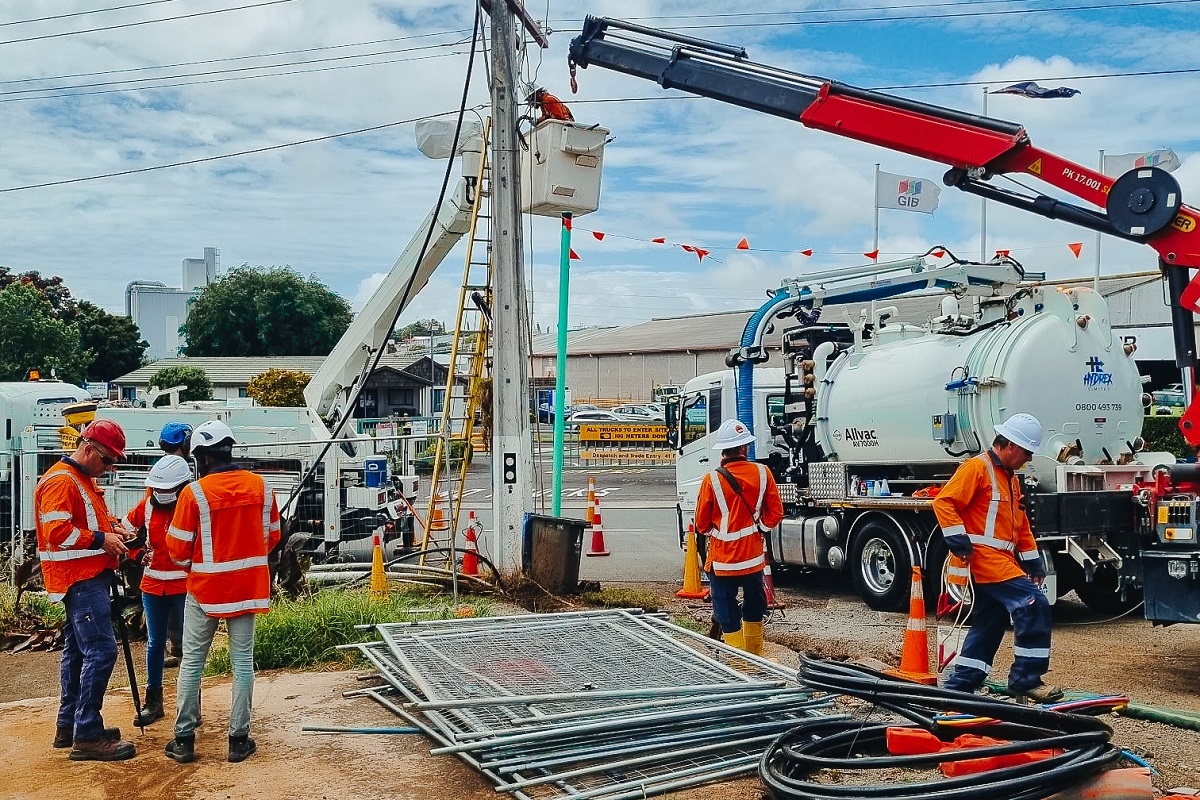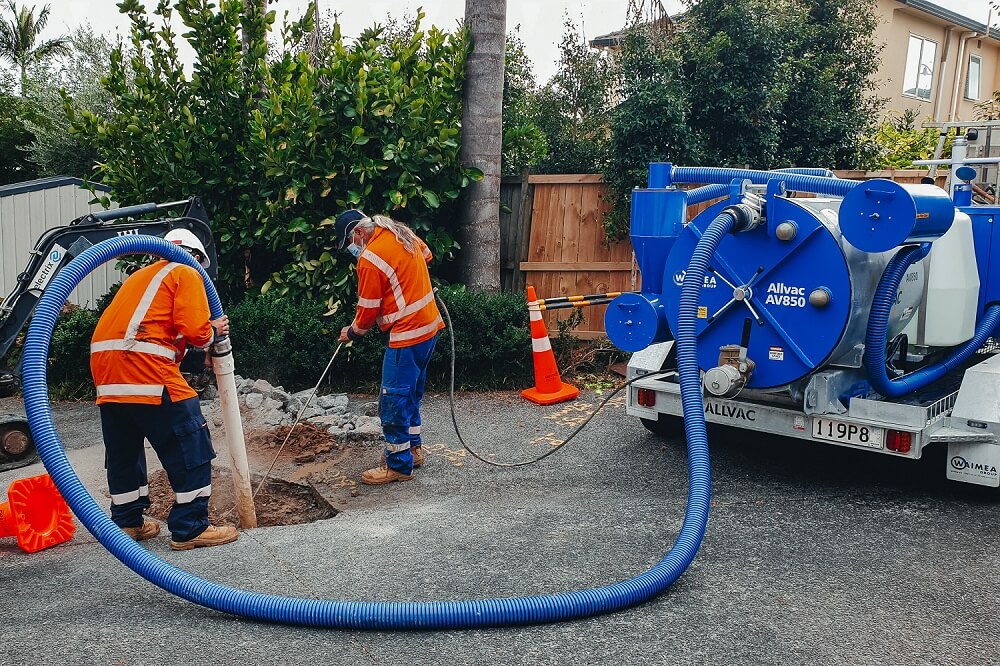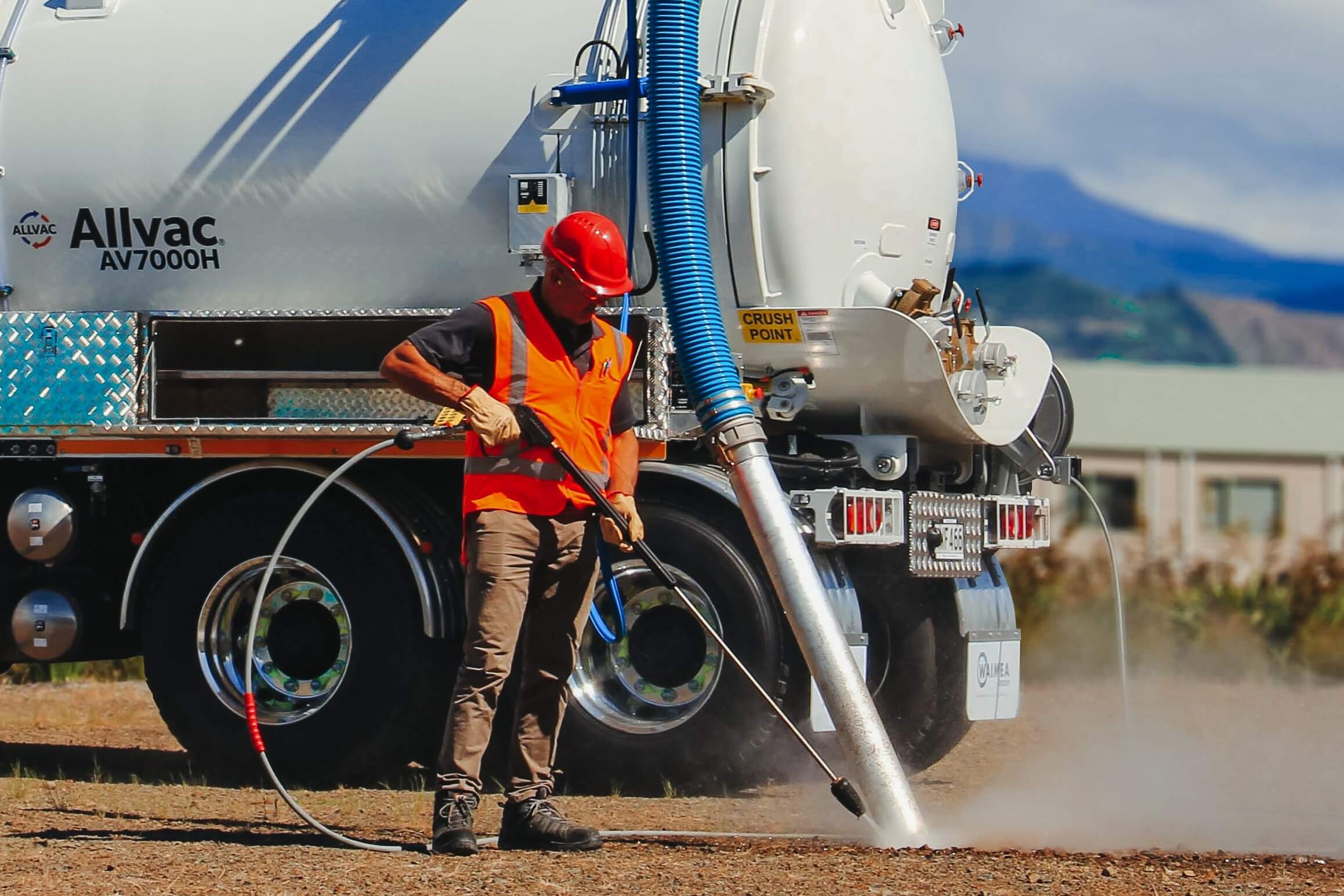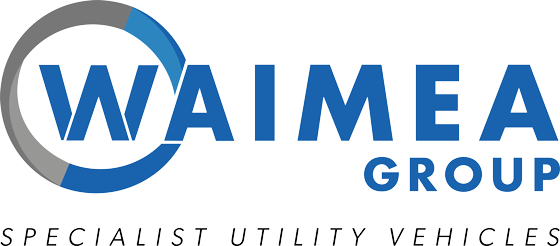What is the safest way to expose underground utilities?

Hydro excavation – the use of water as opposed to air in conjunction with vacuum – has been around for nearly half a century, though it wasn’t until the 1980’s that dedicated equipment became available and became more commonly adopted. As one of the few non-destructive methods to safely dig around buried infrastructure, hydro excavation has gained great momentum over the last few decades, and its applications in construction digging continue to become increasingly valuable.
Given the array of advantages this method offers to construction teams in all sorts of environments, hydro excavation has been broadly embraced as best practice. It is easily considered the future of construction digging across the industry, based on some of the important factors highlighted below.
What exactly is hydro excavation?
Hydro excavation is characterised as a method of employing high-powered suction machines to dig deep, precise underground holes, exposing below-surface utilities and remove associated debris. This approach enables workers to dig safely, quickly and with the least amount of damage or disruption to buried infrastructure.

In more traditional methods of construction digging, crews are challenged to excavate with slower, less accurate and more dangerous mechanical equipment, such as diggers, augers and hand tools. These present greater opportunity for contact with pipes, cables, power lines, and in more recent times the introduction of fibre, threatening both the property and the people involved in the excavation process.
Water and air-based digging methods that rely on hydro excavation are far more reliable in removing soil and debris, as well as far less likely to damage or compromise underground utilities than alternative methods of sharp, cumbersome excavation machinery.
Hydro excavation explained:
Hydro excavation is the use of vacuum equipment in combination with highly pressurised jet streams of water. The water is to soften and break up the material (soil, gravel etc) which is then suctioned out through heavy-duty vacuums and stored in truck mounted tanks for future disposal.
Whilst air-vac excavation solely uses air, hydro-excavation is a faster, more economical and more versatile method and therefore more suitable for managing construction projects.
With the water acting as a lubricant, it is also a more efficient means of moving ground material through creating an effect that is less harsh on the excavation equipment, thereby minimizing wear and tear on the machinery.

What specific value does hydro excavation bring to a project?
If you’re wondering what exactly it is about hydro excavation that positions this advanced method of construction digging as the ‘way of the future’, here are some fundamental factors to consider.
1. Worker Safety
Without a reliable way to locate and bypass crucial underground utility infrastructure, excavation can seriously endanger the lives of work crews. Strikes on natural gas lines and live cables are a particular risk associated with this activity as is the need to enter trenches with hand tools. Hydro excavation is a substantially safer modus-operandi, enabling construction teams to locate dangerous infrastructure more accurately. This reduces the risk of explosions, fires and digging-related deaths and injuries.
With Worksafe emphasising taking all practical steps to mitigate risk, a major part of the reason why hydro- excavation is becoming the future of construction digging is its capacity to prioritise safety whilst not compromising any outcomes with traditional digging equipment. Indeed, it delivers significant benefits so to not consider this form of excavation in projects is not something that will reflect well on an organisation in the event of an incident.
2. Damage Limitation
Damaged or punctured services is a significant risk and cost to an organisation. Hydro excavation mitigates this risk when working around critical underground services. Because there are no moving parts making contact with underground utilities, construction workers can carry out digging projects without disrupting essential infrastructure or incurring the major expense of property damage. It also leaves a minimal impact on the environment; traditional construction machinery can leave damage to surround ecology and environments that requires making good.
3. Cleaner Work Site
Since hydro excavation operators are able to simultaneously vacuum debris into tanks whilst also digging, it prevents the build-up of large piles of dirt and debris. This helps prevent piles of soil from negatively impacting streetscapes and clogging up storm water systems. An essential result of digging via hydro excavation is both cleaner holes and less cluttered work sites.
Cost Savings
Hydro excavation equipment is significantly more advanced that traditional excavation options. The emphasis on finding a ‘smarter’ way to dig has led to development of faster, more precise, safe equipment allowing projects to demand less manual labour and overall risk. Outside just the cost of equipment ‘per worksite hour’, hydro excavation machinery brings savings right across the construction site in speed, accuracy, efficiency and reduction of risk.
With so many smart advantages to hydro excavation, it’s no wonder why the market for equipment is exploding. Construction operators are poised to leverage this technology now and into the future to keep their crews safe, optimise project plans, minimise risk, and maximise profitability. As the technology continues to advance, so will the opportunities for employing hydro excavation at construction sites everywhere.
Reach out to our specialist vehicle consultant Maska Lewis who can guide you through the right type of equipment for your application.

